Choosing between planting cosmos flowers or daisies in your garden can be a delightful dilemma. Cosmos, with their delicate, airy blossoms, bring elegance and grace as they tower among other plants. In contrast, daisies offer a classic appeal with simple petals radiating around a bright center, creating understated beauty. Each flower has its advantages in care, growth habits, and visual impact.
To decide which flower best complements your outdoor space, consider your garden’s design and maintenance preferences. Let’s explore the nuances that might sway your choice.
Identifying Cosmos and Daisies
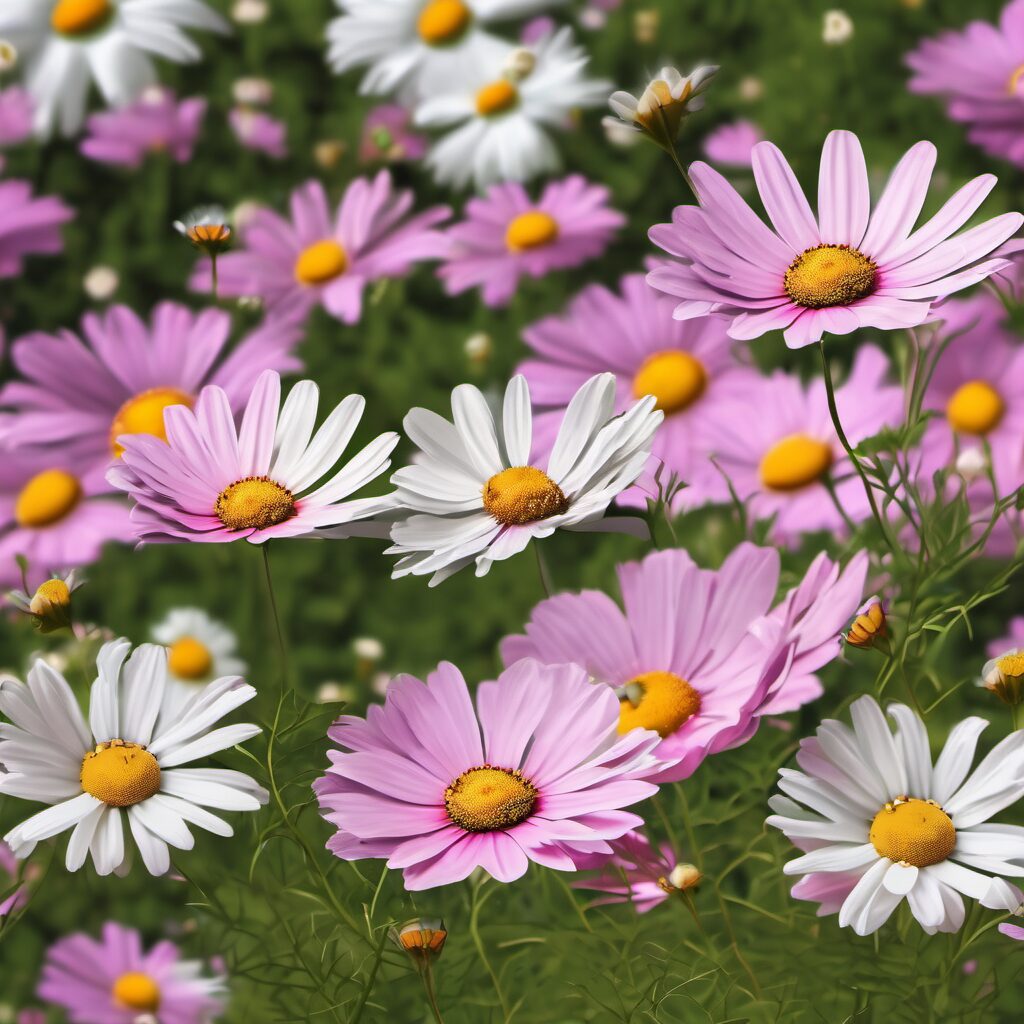

To differentiate between cosmos and daisies, observe the shape and arrangement of their petals. Cosmos petals are broader and cup-shaped, flaring elegantly from a central disc, creating a rounded, open form. In contrast, daisies have long, slender petals tightly arranged around a central eye, giving a more uniform appearance.
Pay attention to the petal edges too. Cosmos petals have smooth edges, contributing to their soft, feathery look. Daisies may have slightly jagged edges, adding to their crispness.
Recognizing these differences helps you make precise choices in gardening or floral arrangements to achieve your desired aesthetic and environmental impact.
Growth Habits Comparison


Cosmos flowers grow rapidly, quickly reaching full height, while daisies spread gradually, enhancing ground coverage. This growth pattern allows you to manage and predict how these plants fill your garden space.
With cosmos soaring up to 5 feet, they provide a quick vertical element behind shorter plants like daisies, creating a backdrop.
Daisies’ slower, spreading growth forms a dense carpet, ideal for ground cover or front borders. Their gradual expansion allows them to intermingle with neighboring plants without overwhelming. Planning your space with these growth habits in mind maximizes aesthetic and functional outcomes.
While cosmos dominate the vertical plane swiftly, daisies’ methodical spread gives you time to adjust and direct their growth. This is beneficial for maintaining garden structure over time with minimal intervention. Both plants offer distinct advantages depending on your garden design and management preferences.
Care and Maintenance Needs
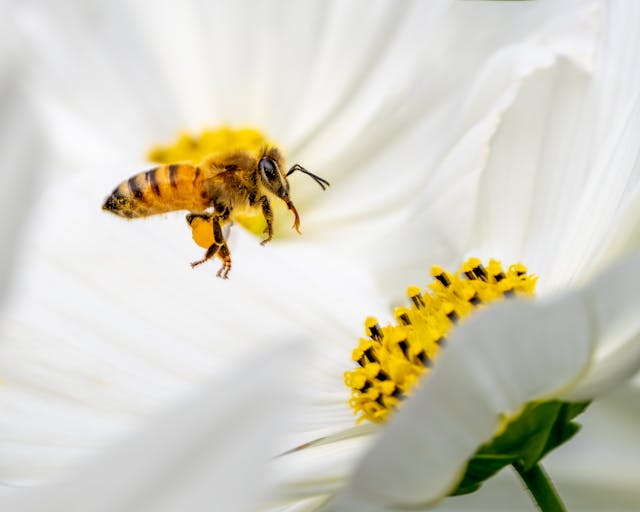

When caring for your garden, it’s important to understand the different maintenance needs of cosmos flowers and daisies. Cosmos are generally drought-tolerant and require less frequent watering, while daisies prefer consistent moisture levels. Water cosmos deeply but infrequently, checking soil moisture regularly. For daisies, water when the top inch of soil feels dry.
Cosmos thrive with minimal fertilization, so limit feeding to avoid fewer blooms. A light application at the start of the season may suffice. Daisies benefit from regular feeding throughout the growing season to support continuous blooming.
Both flowers enjoy plenty of sunlight, but cosmos need full sun to thrive, ideally at least six hours daily. Daisies are slightly more flexible but still prefer sunny spots.
Symbolism and Cultural Significance
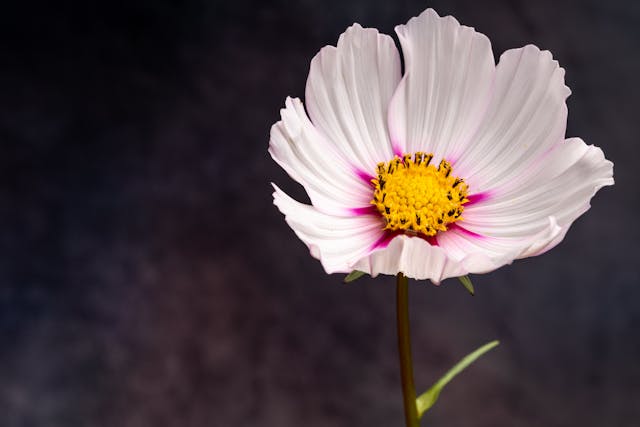

Cosmos and daisies hold rich cultural meanings and are deeply ingrained in traditions worldwide. Cosmos, with their star-like petals, symbolize order, peace, and serenity, often planted for harmony and tranquility in a controlled environment.
Daisies represent innocence, purity, and new beginnings, ideal for marking fresh starts and hopeful futures. Incorporating daisies inspires a clean slate mindset, enabling clarity and purpose.
Both flowers allow you to express personal or cultural sentiments through symbolism. Whether you choose the calming influence of cosmos or the cheerful vibe of daisies, shaping your environment reflects your aspirations and emotional state. This control over garden symbolism creates a space that resonates deeply with personal or cultural narratives.
Popular Varieties and Uses


Numerous popular varieties of cosmos and daisies offer unique uses and aesthetic appeal.
For example, the ‘Sonata’ series in cosmos is compact and bushy, ideal for borders, while the taller ‘Sensation’ series adds vibrant colors to the back of your garden. In daisies, the ‘Becky’ variety is robust and tall, perfect for cutting gardens.
Consider the cosmos variety ‘Double Click’ to add volume, color, and attract pollinators, enhancing biodiversity. For daisies, the ‘Shasta’ variety provides large, white blooms for high-impact visual zones in landscapes.
Integrate these varieties strategically; cosmos prefer well-lit areas, while daisies can thrive in both sun and shade. Choosing the right variety maximizes beauty and aligns with your vision of garden control and order.
Cosmic Cultivation: AeroGarden Unleashes Cosmos Seeds!
 AeroGarden Harvest with Gourmet Herb Seed Pod Kit
AeroGarden Harvest with Gourmet Herb Seed Pod Kit Easily cultivate indoor gardens with the AeroGarden Harvest. This hydroponic system supports six plants up to 12 inches tall, thriving in water without soil mess. Its 20W LED grow light accelerates germination, mimicking sunlight. The touch-sensitive control panel simplifies monitoring, reminding you to add water and plant food. Complete with LED grow light system, power adapter, plant food, and Gourmet Herb Seed Pod Kit, it's all you need for vibrant indoor greenery. Start your hassle-free gardening journey today!
- Indoor gardening made easy with AeroGarden Harvest, eliminating soil mess.
- Year-round harvests regardless of outdoor conditions.
- Compact countertop design accommodates six plants.
- Accelerated growth thanks to the 20W LED grow light.
- Higher upfront cost compared to traditional gardening methods.
- Reliance on electricity for the LED light increases energy consumption.
- Limited plant variety may be restrictive for some users.
Conclusion
As you’ve seen, both cosmos and daisies bring their unique charm and symbolism to your garden. Whether you’re drawn to the tranquil elegance of cosmos or the pure simplicity of daisies, understanding their growth habits and care needs guarantees they thrive.
Remember, cosmos add a splash of height and color, while daisies create a serene blanket of blooms. Choose the flower that best fits your garden’s theme and enjoy the beauty and symbolism they offer every day.




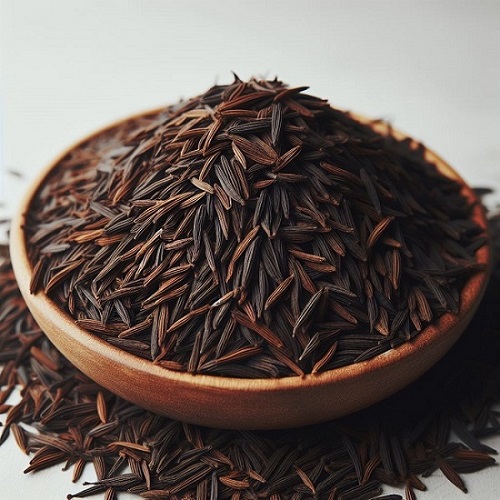
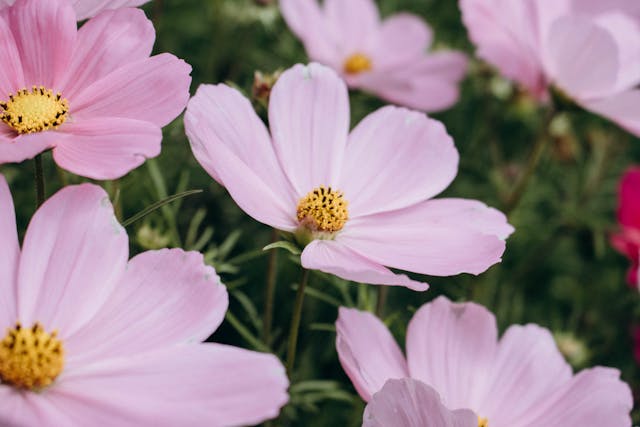

Konnichiwa! (Hello!) I'm Pat Tokuyama, a Japanese tofu cookbook author, who travels for music, food, and adventure. If you like Japanese tea, checkout some of the newestorganic japanese tea, matcha bowls and noren and more!
** Curious about the Plant Based Japanese Cooking Club? ** Learn more here!